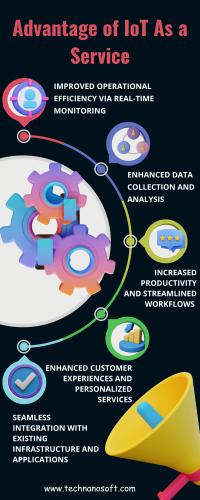Explore How IoT in Smart Homes and Cities is Shaping our Living Spaces

Introduction
As the Internet of Things evolves, the possibilities for creating smarter, more livable spaces are endless, promising a future where technology can seamlessly integrate into our daily lives, improving our comfort, convenience and overall well-being.
Smart city in emerging technologies is a promising solution to the many challenges facing urban areas today. Using innovative technologies, the value of smart cities improves, such as citizens' quality of life, optimizing resource consumption and increasing sustainability.
What is the role of IoT in smart cities and smart homes?
One such approach is IoT in Smart Homes, the subject of many initiatives in today's generation. It is an interconnected computer device capable of transmitting data over the Internet and is one of the key technologies. With the integration of IoT devices, sensors, and data analytics, our living spaces are becoming more intelligent, efficient, and sustainable.
IoT Smart Home Use Cases
1- Enhanced home automation
IoT devices are typically connected to a home automation hub, from lights and appliances to security systems and thermostats. Users can remotely monitor and manage their homes, improving comfort, energy efficiency and security.
2- Intelligent power management
IoT Technology based power consumption monitoring systems monitor power consumption. For example, it can automatically learn user preferences and adjust temperatures, reducing energy wastage and running costs.
3- Connected devices
Device-to-device communication in IoT products provides real-time updates and offers advanced functionality. For example, a smart fridge can create grocery lists, suggest recipes based on available ingredients, and notify users of expiration dates.
4- Enhanced security and protection
Secure IoT devices in your home include cameras, motion sensors, and door locks, providing advanced remote monitoring and surveillance capabilities using real-time alerts.
IoT Smart Cities Technology
1- Efficient Traffic Management
IoT in the automotive industry enables real-time traffic monitoring, congestion prediction, and adaptive traffic signal control. This data-driven approach optimizes traffic flow, reduces congestion, and improves transportation efficiency.
2- Intelligent Infrastructure
IoT sensors in critical infrastructure, such as bridges, roads, and utilities, simplify real-time monitoring and predictive maintenance. This proactive approach minimizes downtime, enhances safety, and reduces maintenance costs.
3- Environmental Sustainability
IoT environmental monitoring Device track air quality, noise levels, and waste management, enabling cities to implement targeted measures for pollution control and resource conservation. It promotes sustainability and improves the quality of life for residents.
4- Smart Public Services
IoT in the public sector enables the efficient delivery of public services and guides drivers to available parking spots, reducing traffic congestion. At the same time, smart waste management optimizes collection routes, reducing costs and environmental impact.
Conclusion
We have seen IoT Smart Home and smart city examples in the above-given information. With the emergence of new technologies and applications, the smart city IoT sector will continue to innovate and grow, revolutionizing how we live, work and interact in urban environments.









Comments